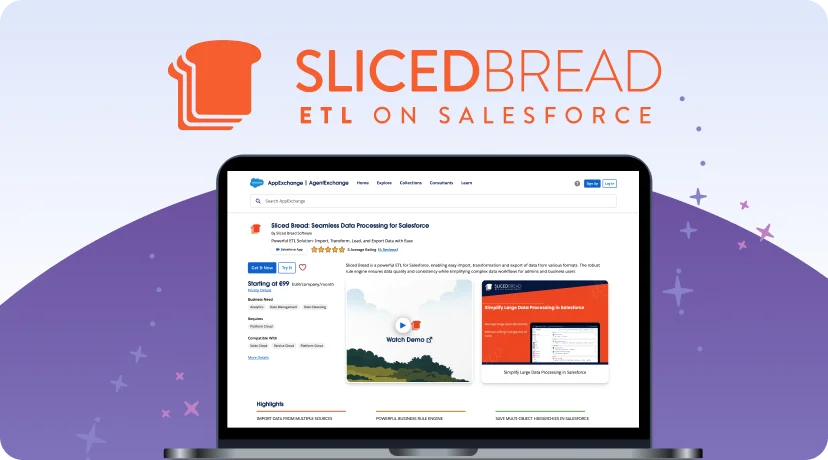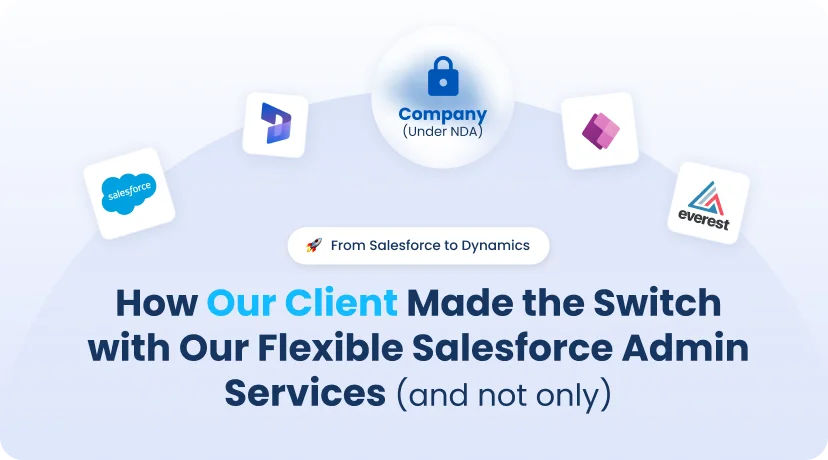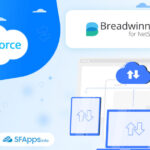
Introduction
Most internal teams are stretched thin, hiring cycles often take months, and any downtime hits revenue and trust. Many are still under pressure to do more with less, so they lean on partners for steady run-ops and small changes. IDC now expects global IT spending to grow between 5% and 9%, even with macro uncertainty money that often flows to services and managed support.
At the same time, hiring remains tight: 74% of employers report talent shortages this year, which slows internal backfills and stretches admins. In Europe, job vacancy rates are easing but still elevated, keeping competition for IT skills high and pushing work to external teams.
This article explains what Certinia Managed Services are, why internal teams struggle to cover everything in-house, and how an outsourced model helps. We’ll focus on what Certinia Managed Services actually cover, when they make sense, and how to run them so finance and delivery stay steady. The goal is simple: give you enough clarity to decide if this model fits your team and what to do first.
- Why Companies Struggle With Internal Platform Support
- Certinia (FinancialForce) Managed Services: Reliable Ongoing Support
- What are Certinia (FinancialForce) Managed Services?
- What is Included in a Typical Managed Services Model
- Project Support vs. Long-Term Services
- Key Components of Certinia (FinancialForce) Managed Services
- Benefits of Managed Services for Certinia
- Engagement Models for Certinia Managed Services
- Offshore vs. Onshore: Choosing the Right Delivery Model
- How Much Does Certinia Managed Services Cost?
- How to Choose a Certinia Managed Services Partner
- FAQs
- Conclusion
Why Companies Struggle With Internal Platform Support
Here’s why in-house support gets hard fast. Day-to-day tickets, month-end tasks, and small enhancements compete with projects, and there’s rarely enough slack to cover it all. When the one person who knows your billing or revenue rules is out, everything slows. Now the common pain points:
- Hiring takes time. Specialist admins and developers are scarce. Backfills stall delivery. (IDC projects skills shortages to hit most firms through 2026.)
- Coverage gaps. Nights, holidays, and quarter-end need attention you may not have.
- Competing priorities. Support, fixes, audits, and new builds compete for the same people.
- Release pressure. Small releases slip without a calendar, test data, and CI/CD.
- Knowledge risk. One “key person” leaving can slow billing or revenue tasks.
Managed capacity solves these without adding permanent headcount
Certinia (FinancialForce) Managed Services: Reliable Ongoing Support
With Certinia Managed Services, you turn ongoing support into a clear, predictable service. You keep the backlog and decide priorities; the partner provides a named team and agreed service levels (SLAs) for uptime, response, and small changes. This is the core of FinancialForce Managed Services: steady care for your environment, fewer surprises around billing and revenue rules, and smoother month-end.
Day to day, work runs from one queue on a simple release calendar. The partner team handles user tickets, light enhancements, integrations, and environment tasks such as masked sandboxes and access reviews. You get short status notes, regular demos, and the change evidence auditors ask for. When you plan a bigger push, you can add a short project track and then return to the normal cadence. If you need guidance on roadmap or standards, bring in FinancialForce consulting services for brief advisory blocks while the managed team keeps execution moving.
What are Certinia (FinancialForce) Managed Services?
Certinia (FinancialForce) Managed Services is an ongoing engagement where a named team runs the day-to-day for your Certinia stack on Salesforce. You keep the backlog and decide priorities. The partner delivers to agreed SLAs and a simple release cadence, so fixes and small changes ship on time.
A typical pod includes a lead, an admin, a developer, and QA. They handle user requests, light enhancements, monitoring, and audit evidence. Admin tasks sit under FinancialForce ERP admin services; build items follow the same Definition of Done (tests, notes, rollback steps). You can run this onshore or offshore, or blend both, without adding permanent headcount.
You can start after a rollout as FinancialForce ERP implementation & Managed Services to stabilize and improve, or use it as a stand-alone FinancialForce Managed Services / FinancialForce support services remote stream for a live org that needs steady care.
What is Included in a Typical Managed Services Model
Scope varies by company, but the core package is consistent. You get a named team, clear SLAs, and a steady release cadence that covers support, light build work, and environment care:
- Support desk: user help, permissions, layouts, ticket triage, and simple fixes.
- Admin care: data hygiene, reconciliations, access reviews, and routine tasks.
- Enhancements: small flows and fields, rate cards, project templates, dashboards, and reports.
- Finance operations: billing events, revenue rules, exception handling, and close checklist updates.
- Integrations: monitor jobs, resolve failures, adjust mappings, and keep alerts healthy.
- Environments & releases: masked sandboxes, refresh cadence, peer review, regression tests, and a visible release calendar.
- Monitoring & controls: background checks on posting jobs, utilization/report accuracy, and basic observability.
- Documentation: runbooks, change logs, and audit evidence for each release.
- Governance & reporting: SLAs, weekly status, monthly reviews, and simple KPIs (throughput, lead time, escaped defects).
- Optional project track: regional rollout delivered as FinancialForce implementation services offsite, with post-go-live folded into the managed stream.
This bundle keeps Certinia stable, moves small work forward each week, and gives finance clean, audit-ready changes.
Project Support vs. Long-Term Services
Project support is a scoped build with a finish line (e.g., FinancialForce ERP implementation services or FinancialForce PSA implementation services). You measure delivery by milestones and sign-offs. It usually starts with a short discovery, then config/build, testing, UAT, and go-live. Changes go through a change-control process, and the team disbands or hands over when the scope is done.
Long-term services are an ongoing stream for stability and small changes. You measure by SLAs, release cadence, and incremental value delivered each month. The focus is steady ops: user support, data hygiene, billing/revenue tweaks, dashboards, and environment care. Most firms use both: run a project to make a big change, then fold the work into Managed Services for upkeep. For global or time-bound rollouts, run the build as FinancialForce implementation services offshore, then hand the org back to Managed Services after go-live.
Use projects to change the shape of your platform. Use Managed Services to keep it healthy and improving.
Key Components of Certinia (FinancialForce) Managed Services
Here are the building blocks of a solid Certinia (FinancialForce) Managed Services setup. They cover daily operations, small changes, and audit needs, whether you run onshore, offshore, or a blend. Use this list to check a partner’s offer and spot any gaps before you sign.
| Component | What it means | Why it matters |
| Single backlog | One queue across support and enhancements | Stops thrash; clear priorities |
| SLAs | Response/restore targets by severity | Predictable service; fewer escalations |
| Named pod | Lead + admin + dev + QA | Stable capacity and context |
| Environments | Sandbox strategy, data masking, refresh cadence | Safer changes; faster UAT |
| CI/CD | Peer review, automated tests, release calendar | Fewer regressions; faster, smaller releases |
| Observability | Job monitors, error alerts, ledger checks | Catch issues before users do |
| Docs | Runbooks, playbooks, access logs | Audit-ready; easier handovers |
| Governance | CAB, dashboards, monthly review | Ties spend to outcomes |
Benefits of Managed Services for Certinia
- Continuity: stable operations through vacations and turnover.
- Speed: short cycle on fixes and small tasks.
- Lower risk: tested releases, masked data, change logs.
- Cost control: capacity without new headcount; scale up/down.
- Better visibility: regular metrics on utilization, margin, WIP, DSO.
- Stronger audits: evidence for revenue, access, and changes.
You get Certinia professional services on tap, not just reactive support.
Engagement Models for Certinia Managed Services
Pick the model that fits your workload. You can also mix models: a retainer for steady work, hourly for spikes, and project-based for defined rollouts.
| Model | Best for | Pros | Cons |
| Hourly | Spikes, audits, urgent fixes | Fast start; pay-as-you-go | Less predictable; context switching |
| Fixed monthly hours (retainer) | Steady backlog and BAU | Predictable cost; reserved capacity | Unused time risk if intake is messy |
| Project-based | Defined outcomes/dates (e.g., go-live hardening) | Fixed scope and milestones | Change requests add cost/time |
| Fractional admin | Consistent admin care | Covers users, data, releases, light config | Not for deep dev work |
This is where FinancialForce support services providers differ. Ask them to show how each model maps to your backlog.
Offshore vs. Onshore: Choosing the Right Delivery Model
Pick based on how you work: workshop intensity, budget, after-hours coverage, and how mature your processes are. Most teams end up blending models.
| Model | Pros | Cons | Best for |
| Onshore | Easy workshops and approvals; same-day collaboration; data stays local | Higher cost; limited after-hours coverage; smaller bench | Early discovery and design, regulated data, stakeholder-heavy decisions |
| Offshore / Offsite / Remote | Cost efficiency; wider skill bench; follow-the-sun coverage; faster ramp | Needs clear specs, written processes, and tight handoffs | Steady run-ops and enhancements; integration builds; works well for FinancialForce support services offsite |
| Blended | Balance of control and scale; local context with offshore capacity | Coordination overhead; two teams to manage | Most long-term setups: local product owner + offshore pod; spin up FinancialForce implementation services remote for big pushes, then hand back to Managed Services |
Insight:
Choose the model that removes your current constraint (speed, cost, or control), and review it quarterly.
How Much Does Certinia Managed Services Cost?
Pricing models:
- Hourly: simple for spikes and audits. Typical surcharges for after-hours.
- Retainer (fixed monthly hours): most common for BAU. Lower effective rate, reserved capacity.
- Project-based: fixed price for well-scoped work, often paired with a retainer for post-go-live care.
- Fractional admin: predictable, lighter option for user support and data hygiene
Indicative ranges vary by seniority, scope, and region. Use this to compare models, not as your final budget.
| Region | Typical hourly | Illustrative monthly (80 hrs) |
| United States | $110–$160 | $8,800–$12,800 |
| United Kingdom | $95–$140 | $7,600–$11,200 |
| Western Europe | $85–$130 | $6,800–$10,400 |
| Central & Eastern Europe | $50–$95 | $4,000–$7,600 |
| India | $30–$60 | $2,400–$4,800 |
| Southeast Asia | $40–$70 | $3,200–$5,600 |
| Latin America | $45–$80 | $3,600–$6,400 |
What drives price: named seniority, after-hours coverage, security requirements, financial close support, and whether the scope includes PSA + Finance + integrations. Public market data shows ADM-type services remain in demand; buyers push for value, so clear scope and frequent delivery win.
How to Choose a Certinia Managed Services Partner
Pick a partner you can run with every week, not just one that looks good on a slide. Focus on proof: real references, named people, and a 90-day plan you can measure. Ask how they handle access, data, releases, and audits day to day. Make sure their pricing model maps cleanly to your backlog and that you keep control of priorities.
- Certinia depth. Ask for references covering Financial Management and PSA (FinancialForce professional services, FinancialForce PSA Managed Services).
- Operating model. SLAs, release calendar, masked data, evidence for audits.
- Team makeup. Lead + admin + dev + QA, not a rotating cast.
- Measurable plan. 90-day roadmap; weekly demos; clear Definition of Done.
- Security. Named accounts, vault, monthly access reviews.
- Commercials. Hourly vs. retainer vs. fractional (how each maps to your backlog).
- Add-ons. Need to scale hiring for a project? Ask about Certinia hiring services and Certinia recruitment services to staff quickly.
- Advisory. When to bring in FinancialForce consulting services vs. run-ops only.
FAQs
What’s the difference between Managed Services and a project?
A project has fixed scope and an end date. Managed Services are ongoing care with SLAs and a steady stream of small changes.
Do I need onshore or offshore?
Use onshore for workshops and decisions. Use offshore for run-ops and builds. Many teams blend both. FinancialForce support services offshore works well when you have written processes and a clear backlog.
What is included in Certinia (FinancialForce) Managed Services?
Certinia Managed Services include everything your business needs to implement and run Certinia PS cloud: implementation, onboarding, support, custom development, and more.
What should be in the contract?
SLAs, response/restore targets, release calendar, environment plan, data masking, role names, and exit terms (code, docs, runbooks). Tie payment to outcomes when you can.
What are the benefits of choosing Certinia (FinancialForce) Managed Services?
Certinia (FinancialForce) Managed Services provide continuity with a named team, time-zone coverage, and clear SLAs. Fixes and enhancements ship on a regular release cadence with peer review and rollback steps, so month-end and audits stay safe. You keep control of priorities while capacity scales without a new headcount, and routine admin work is handled.
Conclusion
Certinia (FinancialForce) Managed Services provide organizations with a stable, scalable way to keep business-critical systems running smoothly while reducing reliance on overstretched internal teams. By combining predictable SLAs, structured release management, and access to specialized talent, managed services help maintain business continuity, speed up fixes, and reduce risk around financial close and audits.
The choice of engagement model – hourly, retainer, project-based, or fractional—lets companies adapt support to their needs, while onshore, offshore, or blended delivery ensures the right balance of control and efficiency. Success ultimately depends on selecting the right partner: one with proven Certinia expertise, transparent governance, and the ability to deliver measurable value every week. With the right setup, Certinia (FinancialForce) Managed Services shifts ongoing support from a reactive struggle to a proactive enabler of growth and stability.

Svitlana is a Communications Manager with extensive experience in outreach and content strategy. She has developed a strong ability to create high-quality, engaging materials that inform and connect professionals. Her expertise lies in creating content that drives engagement and strengthens brand presence within the Salesforce ecosystem. What started as a deep interest in Salesforce later transformed into a passion at SFApps.info where she uses her skills to provide valuable insights to the community. At SFApps.info, she manages communications, ensuring the platform remains a go-to source for industry updates, expert perspectives, and career opportunities. Always full of ideas, she looks for new ways to engage the audience and create valuable connections.





 Previous Post
Previous Post Next Post
Next Post